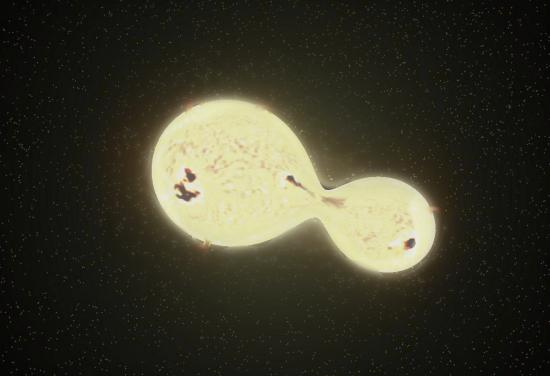BY LETTER
Tidal Force
 Image from Steve Bowers | |
| Tidal forces pull the stars in this contact binary pair into shapes that fill their respective Roche Lobe | |
A secondary effect of the force of gravity, arising from the fact that gravitational effects are not constant across the width of an object: the portions nearer the source of gravity are subject to a stronger pull, and the portions further away are subject to a weaker pull. Thus the near side is relatively accelerated towards the source and the far side has a relative acceleration in the opposite direction. The steeper the gradient, the stronger the effect. Low level tidal forces may cause bodies of water or other liquids on an object to have tides. Tidal forces may also cause a body to flex somewhat, and if they are strong enough may be a cause for geothermal activity in some planets or moons. These forces may eventually cause a rotating object to slow so that its period of revolution and its period of rotation around the nearby sun or planet are equal. At the extreme, if a body is sufficiently deep within a gravitational well it may be pulled apart by tidal forces (see Roche limit).
Related Articles
- Intertidal Zone - Text by M. Alan Kazlev
Biome where the sea meets the land, during high tide it is submerged, in low tide exposed to the air. Home to many familiar and unique biological organisms. Many artificial biospheres simulate tides in order to generate intertidal zones. - Roche's Limit - Text by M. Alan Kazlev
The distance from a large body or primary within which tidal forces would disrupt or disintegrate a satellite. - Tides
Appears in Topics
Development Notes
Text by Stephen Inniss
Initially published on 27 February 2014.
Initially published on 27 February 2014.






